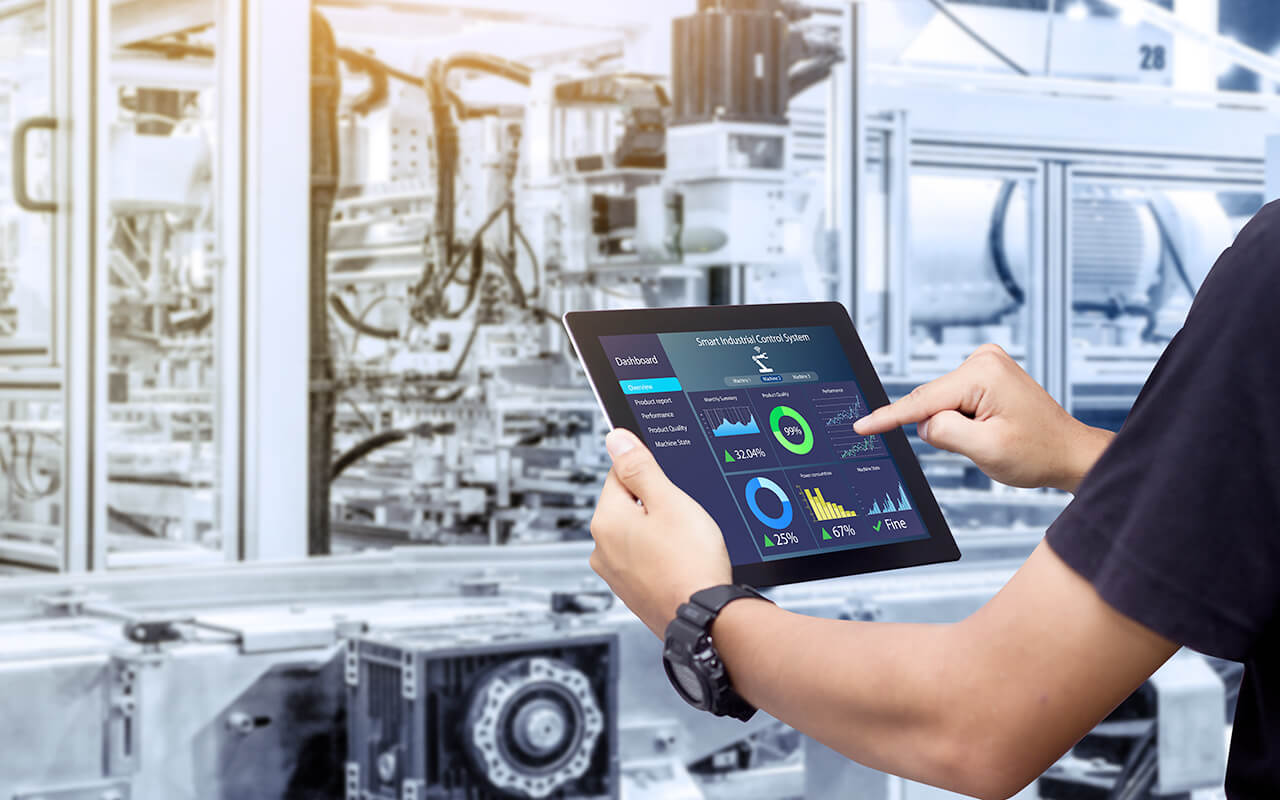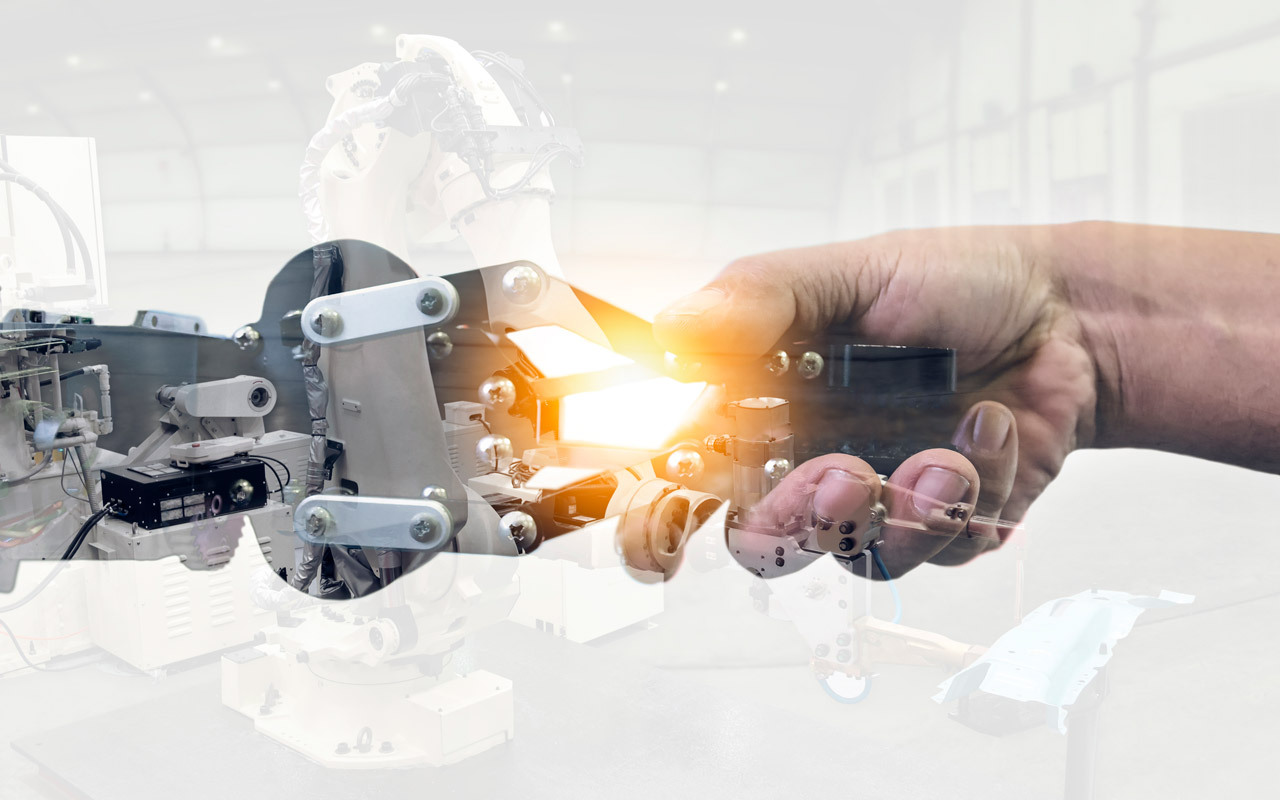19/10/2022
“Digital Factory" as success model: How to leverage the potential of digital and networked production

- How the self-controlling factory works in its ideal state
- Intelligent and automated production planning
- Automatic optimization due to digital manufacturing chain
- Integrated process assurance maximizes the quality of the result
- Key figures: Management gains better overview of manufacturing
- Conclusion: Step by step towards the digital factory
The most important feature of the digital factory is its transparency. Machines and plants constantly supply data in real time – on their technical condition on the one hand, and on their current activities on the other. This enables many up – and downstream areas to evaluate this data and use it for their work. The benefits range from better planning and cost savings to better informed managers.
How the self-controlling factory works in its ideal state
This article paints a picture of a perfect “digital factory”, which should be regarded much more as a vision of the future than as an immediately achievable "must". How much these visions presented here can already be turned into reality today depends very much on the individual company and probably requires numerous manual intermediate steps. Nevertheless, the vision of the perfect “digital factory” is suitable as a guiding principle to be achieved in the course of digitalization – for in this way, at least, the future direction is always clear. Production planning often focuses on the selection and allocation of the machines involved in the manufacturing process. The fact that the required raw parts arrive at each station just in time and the fully processed parts are forwarded again just as promptly is often left to the attention of in-house transport. In smart, digital factories, this process can be optimized very easily by the machines themselves initiating the transport and "ordering" or "delivering" the appropriate raw parts.
Generally speaking, the direction is irrelevant: Either the last machine in the process orders the raw parts it requires from the machine located before it in the process. This in turn orders from its predecessor, and so on, until it reaches the first machine, which orders raw material from the warehouse. Or the first machine delivers the parts it processes to the next machine, which processes what arrives at it and in turn passes its output to the next machine. In either case, the delivering machine organizes the transport so that the entire process chain manages itself. The basis of the process is a detailed digital production order that names the individual stations and the associated NC programs, operating resources and so on. Orders and logistics then run on this basis.
Intelligent and automated production planning
The information in the production order can be used to calculate when which order has to run on which machine in order to be completed on time – the duration of each operation can be calculated from the NC programs, transport times are firmly defined with a certain buffer. In this way, the order sequence and the processing and transport times result in the exact time when which parts have to be where. And since the system is not fed just-in-time order by order, but with a certain lead time, each machine "knows" when it is running out of work. It can then autonomously report its idle capacity to the control station, so that it is visible there to the minute when which machine has spare capacity – whereupon corresponding orders that close these gaps are optimally fed in. This means that the factory, which controls itself via the digital production orders, results in an equally autonomous production planning. The production planner always has a complete, up-to-date overview of the current and future production flow. He only must ensure that the gaps are filled with the right orders.
Automatic optimization due to digital manufacturing chain
This newly gained overview also makes it possible to optimize production. If the same machines run "dry" repeatedly, a bottleneck has to be in the preceding step. Also, the need for additional capacity becomes visible, so that new acquisitions can be purchased specifically sized for this need.This newly gained overview also makes it possible to optimize production. If the same machines run "dry" repeatedly, a bottleneck has to be in the preceding step. Also, the need for additional capacity becomes visible, so that new acquisitions can be purchased specifically sized for this need.
Integrated process assurance maximizes the quality of the result
Modern machining centers and assembly machines are equipped with sensors and tool measurement systems that immediately detect when a tool is broken or, for example, a torque has not been reached. The part in question can be rejected or reworked immediately, instead of being noticed during final inspection. This saves unnecessary production steps and gains speed. What's more, the machine can order replacements for the rejected parts from the "delivery machine" so that in the end, despite the rejects, exactly the number of parts required is delivered.
Key figures: Management gains better overview of manufacturing
The transparency of the digital factory also provides the management with much more precise insights into the status of production. Key figures are collected automatically and enable comparisons with other plants and past production processes. The effectiveness of optimizations can thus also be precisely analyzed and quantified in key figures. Post-calculations, profit calculations – all this becomes possible in real time allowing direct and fast reactions to changes in raw material prices, for example.
Conclusion: Step by step towards the digital factory
How many steps still have to be taken to achieve this ideal of a fully digital factory probably varies from company to company - only very few have already reached the ideal state. Nevertheless, having such a vision in mind is extremely fruitful for a successful digitalization strategy. Only with a clear goal in mind the path that the company must take can be defined and broken down into feasible stages.


